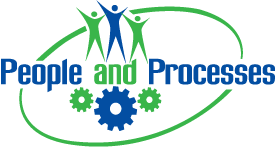 Sadly for some organizations, their maintenance and operations practices are not much different than the small bands of gold miners going for broke in the Alaskan wilderness as reflected on the television shows. Operating on s shoestring budget, they try to bootstrap their way along, experiencing increased losses from a run to failure mentality. While run to failure can be a strategy for some equipment, it shouldn’t be for all of your assets, especially the critical ones. Proactive organizations learned a long time ago that you can’t typically sustain your business with that approach.
Sadly for some organizations, their maintenance and operations practices are not much different than the small bands of gold miners going for broke in the Alaskan wilderness as reflected on the television shows. Operating on s shoestring budget, they try to bootstrap their way along, experiencing increased losses from a run to failure mentality. While run to failure can be a strategy for some equipment, it shouldn’t be for all of your assets, especially the critical ones. Proactive organizations learned a long time ago that you can’t typically sustain your business with that approach.Looking the gold miners, they begin the season by pulling in their heavy equipment and setting up shop on tract of land or claim.. Little is done from condition monitoring perspective to anticipate impending failures. There are no written procedures. Training occurs from the perspective of tribal knowledge, if someone in the tribe has that knowledge for starters. In the quest to meet the production numbers, operators push the equipment to its limit. When critical assets fail such as the separation equipment, the operation grinds to a halt. Bootstrapping along the way from a cash perspective, they have few if any spare parts on site. The nearest spare parts are days away. This holds true for even benign parts like belts and bearings. Once the operation restarts, the pressure is on to make up for lost numbers. When the season ends, they pull back the equipment. Little is done from a time based scheduled restoration perspective to prepare for next season. They set themselves up for the cycle to repeat, the cycle of despair and reactivity.
Contrast those concepts to your organization and its approach to maintenance and reliability. Are you operating with an overall run to failure mentality? If so, use education about the Maintenance Best Practices to help your organization gain a competitive advantage. What else could you do to drive the culture change necessary to gain a proactive reliability based approach?
Cheers,
Jeff
